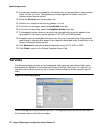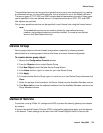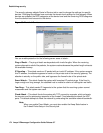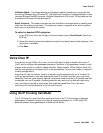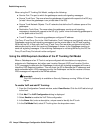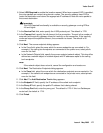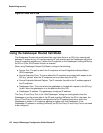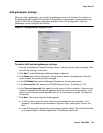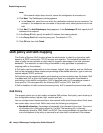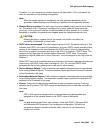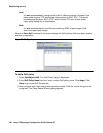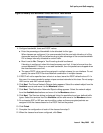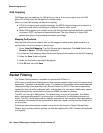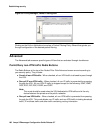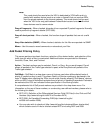
Establishing security
180 Avaya VPNmanager Configuration Guide Release 3.7
Note:
Note: If the network object does not exist, cancel the configuration and create one.
8. Click Next. The Gatekeeper(s) dialog appears.
● In the Zone field, select the zone which the destination endpoints are connected to. For
example, if the endpoints are connected to the private zone, select private zone for this
field.
9. Click Add. The Add Gatekeeper dialog appears. In the Gatekeeper IP field, specify the IP
address of the endpoint.
10. In the Proxy IP field, specify the public IP address that is being shared.
11. In the Proxy Port field, enter the proxy port. The default is 1719.
12. Click OK and then click Finish.
QoS policy and QoS mapping
The Quality of Service (QoS) function allows the administrator to classify and prioritize traffic
based on a DSCP value and/or TCP/IP services and networks. The bandwidth available to a
class of traffic can be restricted or rate-limited to a specific percentage of the total upstream
bandwidth. This restriction or rate-limiting of bandwidth is only applicable to upstream or
outgoing traffic on the interface.
A QoS policy can be created with up to four classes, highest, high, medium, and low. Attributes
that can be assigned to these classes are percentage of bandwidth allocation, type of services,
network objects, DSCP, and burst.
QoS policies can be mapped to public, public-backup, and semi-private zones. By default, QoS
is enabled and VoIP is given the highest priority and there is no restriction of bandwidth or
rate-limiting. In the default configuration, VoIP is identified solely by IP precedence values of
three and five. This corresponds to the following DSCP values: 24-31 and 40-47.
If QoS is disabled, all traffic receives the same priority. VoIP is treated the same as data traffic.
QoS Policy
This property allows you to add, modify and delete QoS policies. Each policy can include up to
four configurable classes, highest, high, medium and low.
You can configure each class according to how network traffic should be prioritized. Each class
can contain data, voice or both. Within each class the following is configured:
● Bandwidth allocation. Percentage of bandwidth to be allocated to the class. The sum of
all allocations for a QoS policy should be 1 to 98%.The remaining 2% is internally
allocated by default to ICMP, IGMP, and RSVP. The excess bandwidth not specified in the
sum of allocations of the policy is reserved for all other traffic not defined in the classes.



